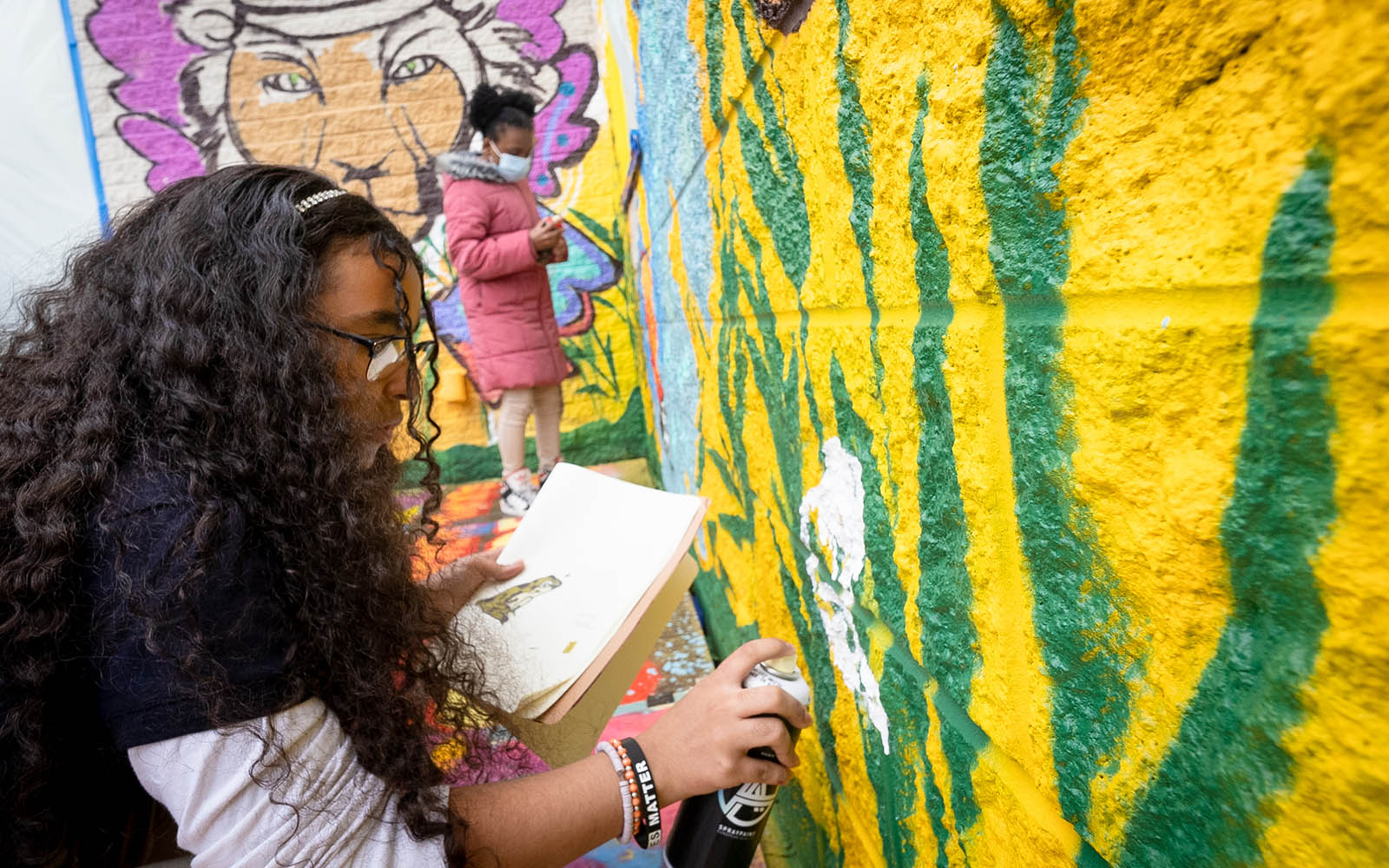
Community Collaborations
In the past couple of years, we’ve had fewer opportunities than usual for student engagement. However, 2022’s student programs resembled something much closer to normal—and for us, “normal” is far from average. In fact, beyond our regular field trips, Rivers of Steel had the opportunity to work with two area schools on special projects this year thanks to support from The Grable Foundation and the National Park Foundation. It was an engaging and exciting time for local students in Braddock Hills and Woodland Hills.
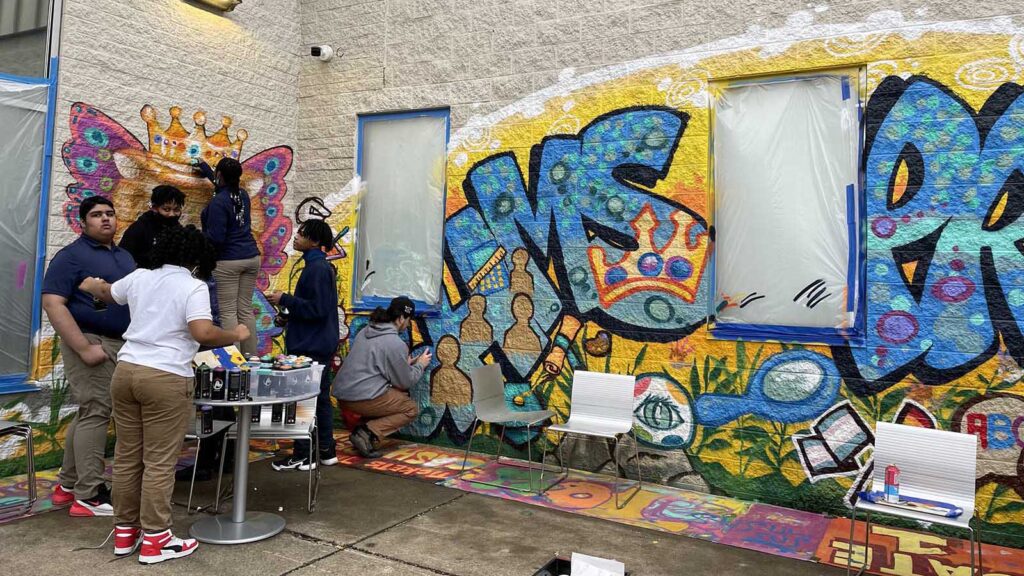
Braddock Hills Middle School Pride Mural
Braddock Hills Middle School’s Mural Project
For the first project, funded by The Grable Foundation and part of the Remake Learning Network, Rivers of Steel partnered with Propel Braddock Hills Middle School for an artist residency project. Art teacher Susan Sarabok’s students in grades six through eight worked with Rivers of Steel teaching artists who combined two established forms of style-writing traditions not often thought of together—modern graffiti and traditional Turkish calligraphy. Shane Pilster and Max Gonzales, two graffiti writers and mural artists from Rivers of Steel’s staff, led the workshops, along with calligrapher and frequent Rivers of Steel collaborator, Benjamin Aysan.
In addition to learning style-writing techniques, students also worked with the artists to design and paint a mural at their school. The school year finished with a field trip to the Carrie Blast Furnaces so students could learn more about the history of the site and see dozens of large-scale graffiti-style murals created by local, national, and international artists.
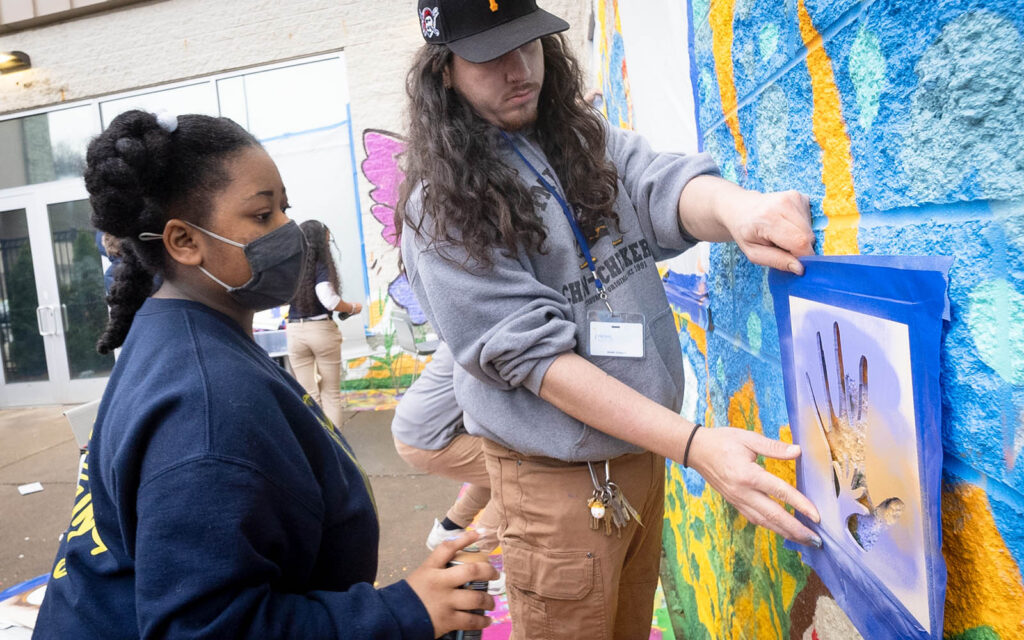
Max Gonzolas helps a student with her stencil.
“This mural project with Propel Braddock Hills was one of the most involved mural education opportunities we’ve ever had,” said Max Gonzales. “Not only was this a chance to create a mural with the designs and paintings of these middle schoolers, but we also gave them a semester-long education on the origins of graffiti, lettering, and muralism. We were able to tie together the ideas of professional calligraphy and lettering to the typographic art form of graffiti. This was an important opportunity to develop a relationship with the students to ensure that we were allowing their voices to be heard and for them to have significant input in the painting and design of the mural. The end result of this project is much more than just a mural; it is a source of pride for the students and an experience that they can now share with their personal communities.”
Student feedback included excitement over being part of a mural that will be visible at the school for years to come. Students also enjoyed their visit to the Carrie Blast Furnaces, where they had the opportunity to paint on the same walls as professional muralists and learn more about the history of the site itself.
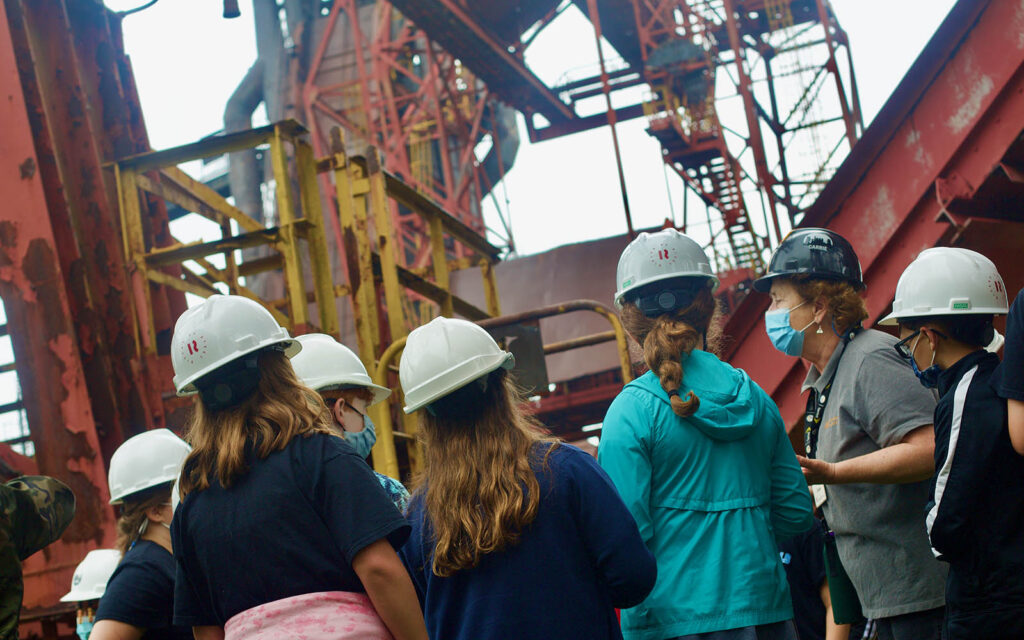
Students from Turtle Creek Elementary STEAM Academy at the Carrie Blast Furnaces.
Woodland Hills and the Steelworker Project
The second project, funded by the National Park Foundation’s Open OutDoors for Kids initiative included fourth-graders from Turtle Creek Elementary STEAM Academy, part of the Woodland Hills School District. Students participated in a pilot of The Steelworker Project, a three-part program focused on local steel history.
JaQuay Carter, Rivers of Steel’s interpretive specialist and outreach coordinator, kick-started the project with a visit to the students’ classroom, engaging them with activities and artifacts from Rivers of Steel’s Steelworker Trunk. This experience included opportunities for students to try on steelworker safety gear.
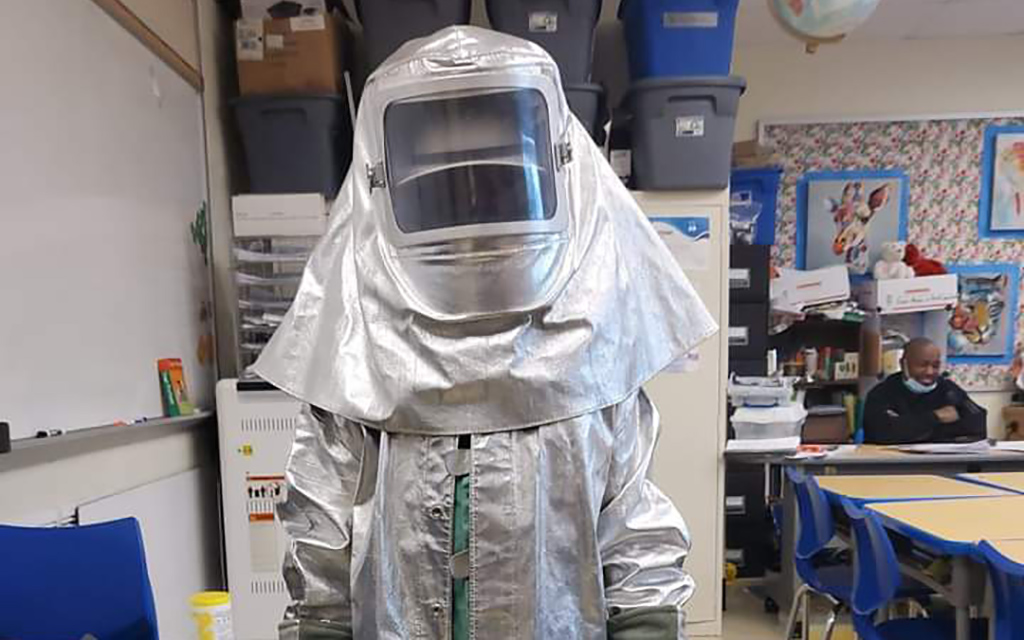 “It was an overall wonderful experience to work with the staff and students at Turtle Creek Elementary STEAM Academy,” said JaQuay Carter. “The young scholars were well prepared, thoroughly engaged, and very interested to learn about the process of making iron and steel. These were some of the brightest and best-behaved students I have ever had the pleasure of instructing. One lucky student per class got to try on heat safety gear and experience the clothing required to work at a blast furnace.”
“It was an overall wonderful experience to work with the staff and students at Turtle Creek Elementary STEAM Academy,” said JaQuay Carter. “The young scholars were well prepared, thoroughly engaged, and very interested to learn about the process of making iron and steel. These were some of the brightest and best-behaved students I have ever had the pleasure of instructing. One lucky student per class got to try on heat safety gear and experience the clothing required to work at a blast furnace.”
Following JaQuay’s classroom visits, the students visited the Carrie Blast Furnaces to tour the site and learn more about iron production and working conditions there. After the visit, JaQuay recollected: “The four groups of students then got to see the Furnaces and learn how iron was made, and they loved it!”
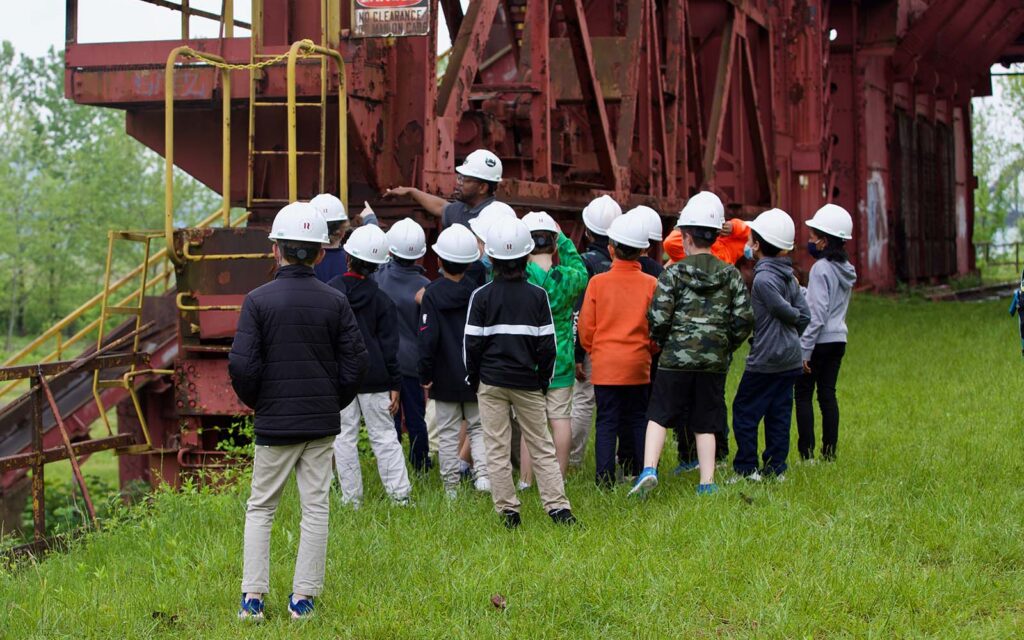
JaQuay Carter with a group of students from Turtle Creek Elementary STEAM Academy.
As a follow-up to their visit to the Carrie Blast Furnaces, students met with Rivers of Steel Tour Guide and retired steelworker Bill O’Rourke over Zoom. Students prepared questions for Mr. O’Rourke to find out more about his firsthand experiences working in the steel industry, including his time as an industrial engineer at the Carrie Blast Furnaces.
Rivers of Steel’s Director of Education, Suzi Bloom, created this program to pilot a multi-experience opportunity for a younger audience to visit Carrie and also to host students who live and go to school near the National Historic Landmark. “Providing students with an opportunity to learn about the history that took place so close to their homes is so important for their sense of pride in their community,” said Suzi. “The historical significance of places like the Carrie Blast Furnaces and the people who worked there is so essential to convey, especially as our younger generations become further removed from having living relatives who worked at these sites.”
Interested in reading about other Rivers of Steel education programs? Check out this story featuring the Environmental Science on the Three Rivers program.







